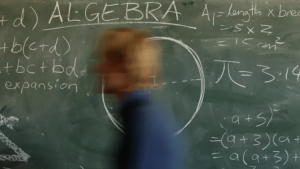Home » Commentary » Opinion » Expel those who fail to educate our youth
· The Australian

 Australia’s education policies are clearly not lifters but increasingly leaners, as the latest global results show us sliding further.
Australia’s education policies are clearly not lifters but increasingly leaners, as the latest global results show us sliding further.
The Program for International Student Assessment scores resoundingly confirm that too many Australian 15-year-olds cannot demonstrate the mathematical, scientific and reading literacy skills that are critical for success in life and work. This is hard evidence of policy failure at the highest and deepest levels.
Australian students’ results have declined in absolute terms and relative to other countries, with China (four provinces only) and Singapore topping the rankings in all three domains. But two things really stand out this time: across Australia, the proportion of low performers has increased and the proportion of high-performing students has fallen.
A look at reading literacy, which has been tested since 2000 and was a major focus again in this most recent round, shows that Australian students’ average score has declined from 529 to 503, meaning our students performed worse than their predecessors 18 years earlier. Despite huge increases in spending on education — and all kinds of innovations in literacy — the proportion of high performers is down by seven percentage points, and low performers increased by four percentage points.
Poor readers are disadvantaged in just about every aspect of life, and the performance of our teenagers, on average, is 1.3 years behind their peers’ in Singapore.
The relentless downward drift is accompanied by the even more worrying drop in the number of students reaching PISA’s National Proficient Standard — down from close to two-thirds in 2003 to just over half last year. Only 54 per cent of young Australians met the standard in mathematics last year, a performance almost exactly on the OECD average and three years lower than that of leading country Singapore.
The PISA results tell us that one in five Australian students cannot achieve at “a reasonably challenging level of performance where students need to demonstrate more than the minimal skills expected”.
This is an indictment of education policies and practices around the country. These young people will almost certainly enter adulthood without the confidence and competence they need to compete in a complex world.
It is hard to see them as anything other than the tragic product of education systems that simply pass children along from one year to the next, unwilling or unable to lift them out of the spiral of decline.
And this isn’t a case of overreacting to one test. The Progress in International Reading Literacy Study in 2016 — a completely separate assessment that tests the reading ability of students in Year 4 — also indicates that one in five young Australians are below the international literacy benchmark. Attempts to downplay the significance of these results do our disadvantaged students a severe disservice.
Policy alarm bells should have been ringing following the release of the 2015 PISA results, especially when OECD director for education and skills, Andreas Schleicher, accused Australia of tolerating failure and not looking at evidence-based strategies for supporting struggling students.
Between 2003 and last year, the proportion of Australian students achieving the National Proficient Standard in mathematical literacy went down by 13 points, and science literacy has seen a drop of nine points since 2006.
Yes, success in PISA calls for scientific and mathematical knowledge, but no one should underestimate the literacy demands in all the tests — and that is where Australian education simply does not measure up.
The PISA test items are sophisticated. While some items are multiple choice, many require students to read at length, sort out superfluous information, apply concepts and processes, and then create original answers. That’s a world away from the National Assessment Program — Literacy and Numeracy.
The PISA reading literacy results place Australia in the same underwhelming category as the US, Britain and New Zealand. These countries have common academic challenges, in part due to adopting literacy fads that have served students poorly, such as whole language, genre theory and text types, and a range of constructivist methodologies.
Singapore sets different standards. Its students learn in a multilingual environment with extremely high expectations of language acquisition, and their consistently excellent PISA results speak for themselves.
Australian education is on a downward trajectory in the areas that many argue matter most in the 21st century: English, mathematics and science.
Endless reviews and reports have concluded that teachers lack expertise and too many teach outside their subject areas, academic standards are low and assessment processes (especially for years 11 and 12) are variable — the list goes on. Cultural differences also come into play; Australian students show far less respect for education, as reflected in their classroom behaviour, in comparison to their peers in better-performing countries.
Our states and territories are responsible for training and employing teachers, for setting academic standards and holding schools to account, and for making sure future generations receive the education they deserve. Only they can turn this around.
How much more evidence is needed before we accept the only logical response is to call out this comprehensive policy failure and replace those who oversee it?
Fiona Mueller is director of the education program at the Centre for Independent Studies.
Expel those who fail to educate our youth